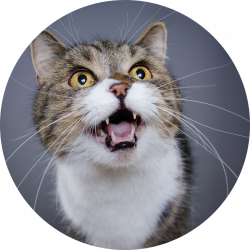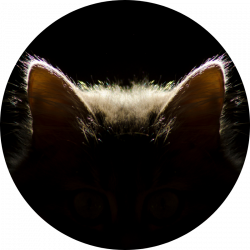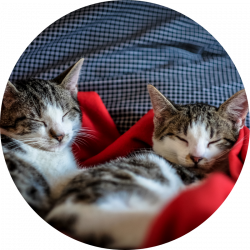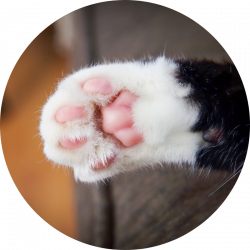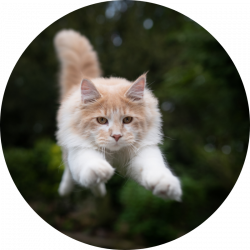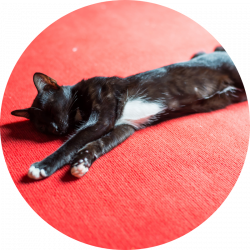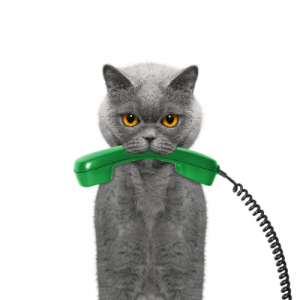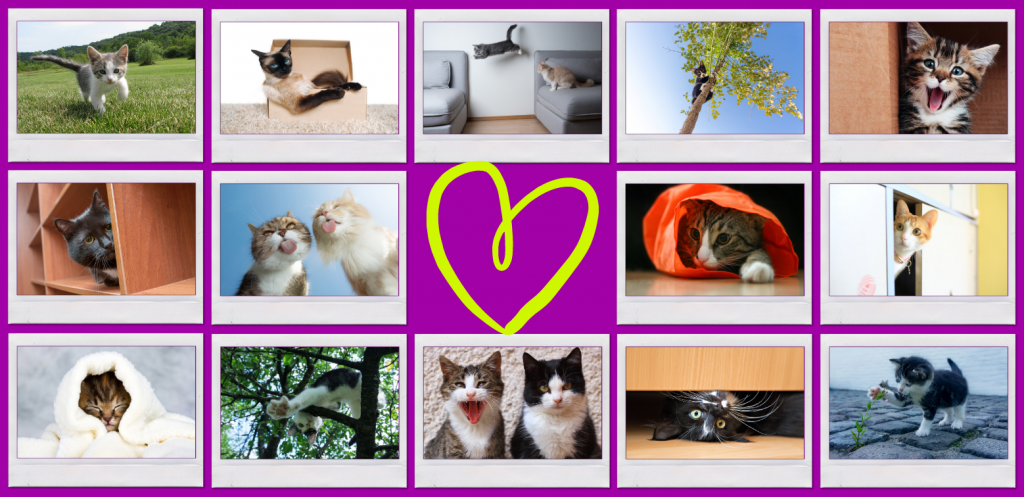

We love cats, which is why we're a Kitty Clinic!
Here at Thornleigh Vet Hospital we love cats and all the quirkiness, love and fun that comes with owning them. With 27% of Australian households owning a cat we wanted to create a vet hospital and a platform where cat owners come to celebrate their uniqueness and find answers to their cat care questions.
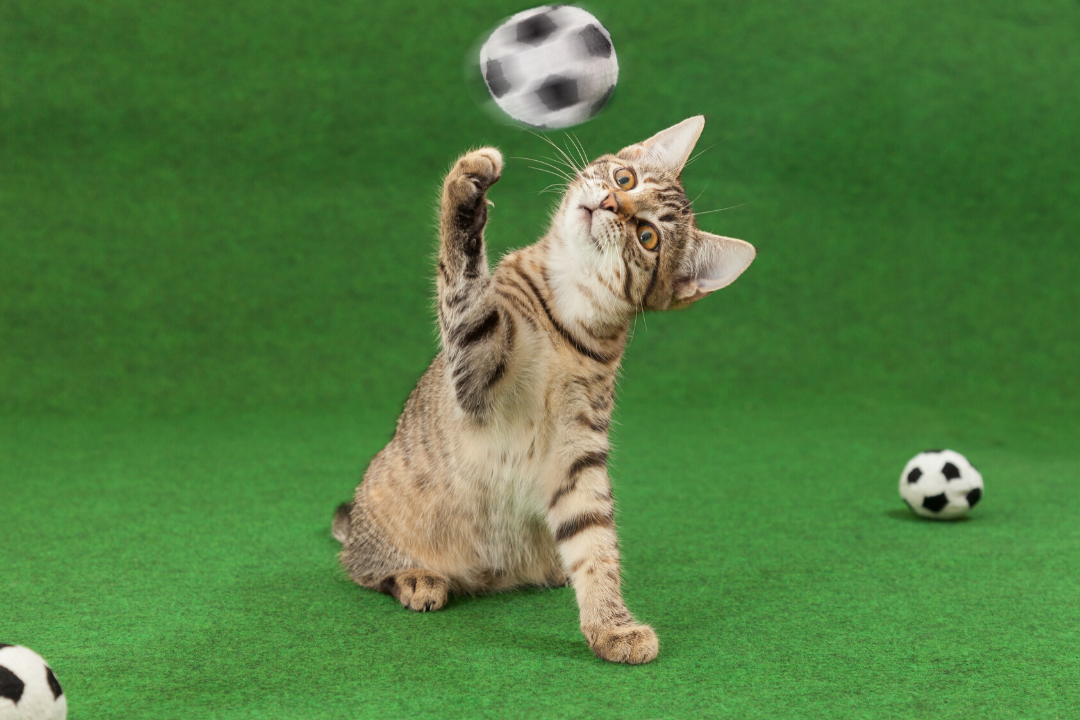
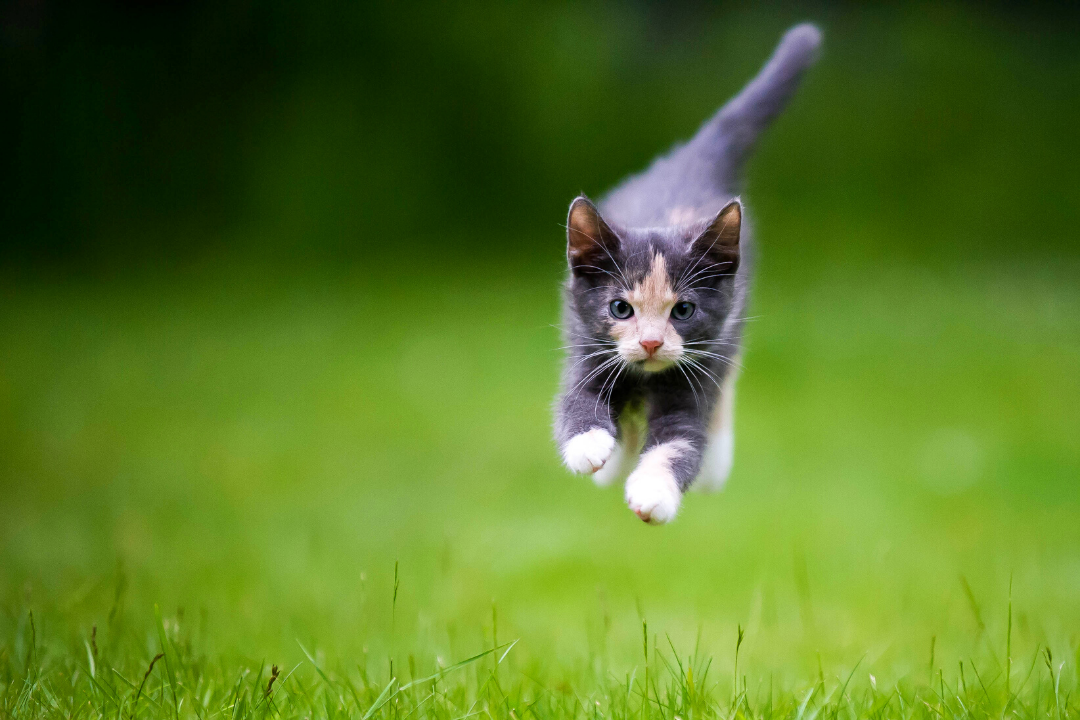
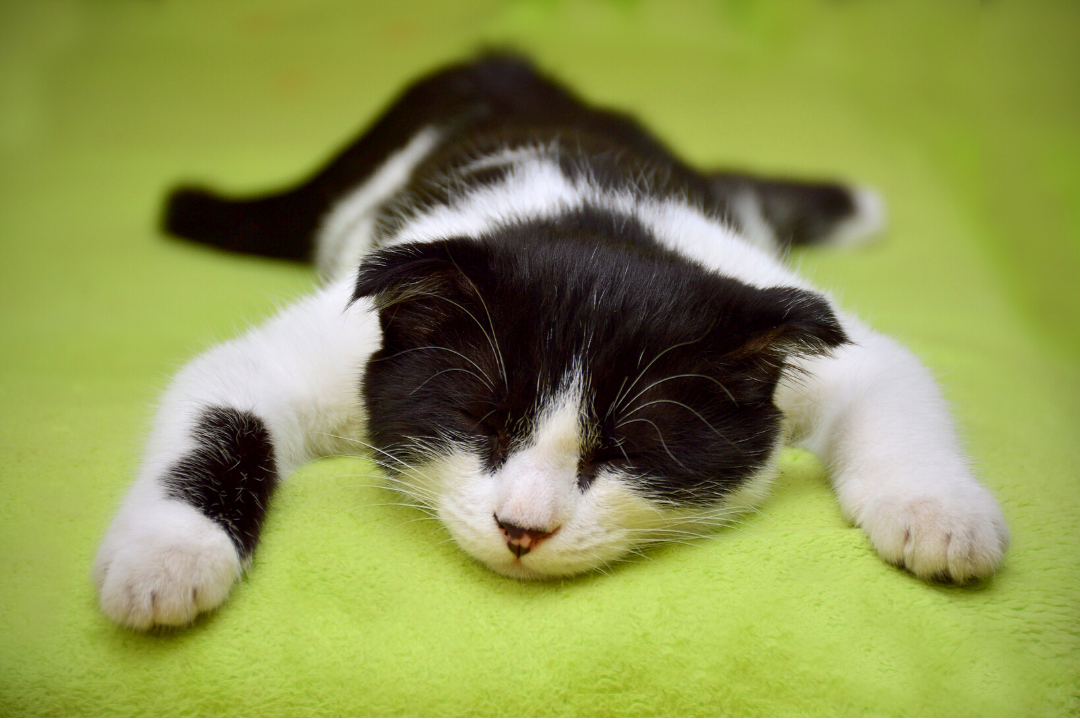
Our vet hospital is a silver accredited Cat Friendly Clinic with the International Society of Feline Medicine. This was a program designed to promote stress-free vet visits for cats and incorporates a number of aspects such as a separate cat waiting room, a separate cat-friendly consult room, gentle handling techniques and a number one focus of reducing your cat’s fear, anxiety & stress.
Laura Westbrook is our cat advocate for the program and also, (as expected) happens to be a crazy cat owner. Our entire team has also completed additional study into fear-free handling and we incorporate this into our daily interactions with our feline friends.
We have a purpose-built cattery that contains lovely spacious runs with vertical space and fresh air for your cats to stretch out. Our boarding staff are specifically trained to ensure your cat’s stay with us is relaxing and smooth and as it’s attached to vet hospital our vets are on hand if any issues arise.
We know cats are different to dogs and in some aspects so much harder to understand so we hope the troubleshooting information below assists you in any cat problems you might be dealing with and gives you a better understanding of these beautiful creatures.

What would you like to know about cats?
Our cat-crazy team is a great place to start if you want to learn about caring for a kitty.
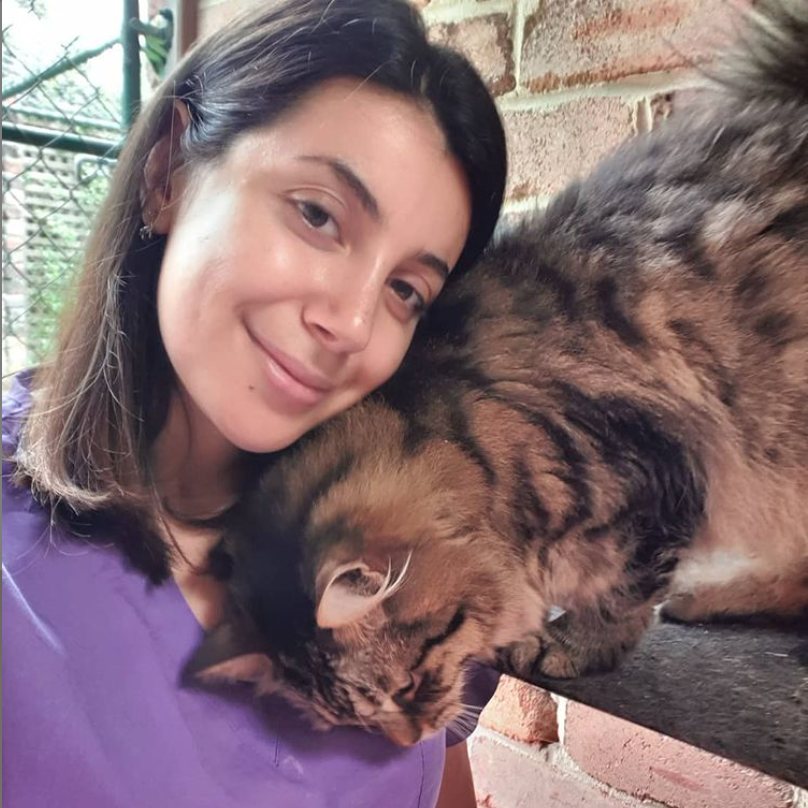

Some interesting kitty facts...
Thinking about a new addition to your family?
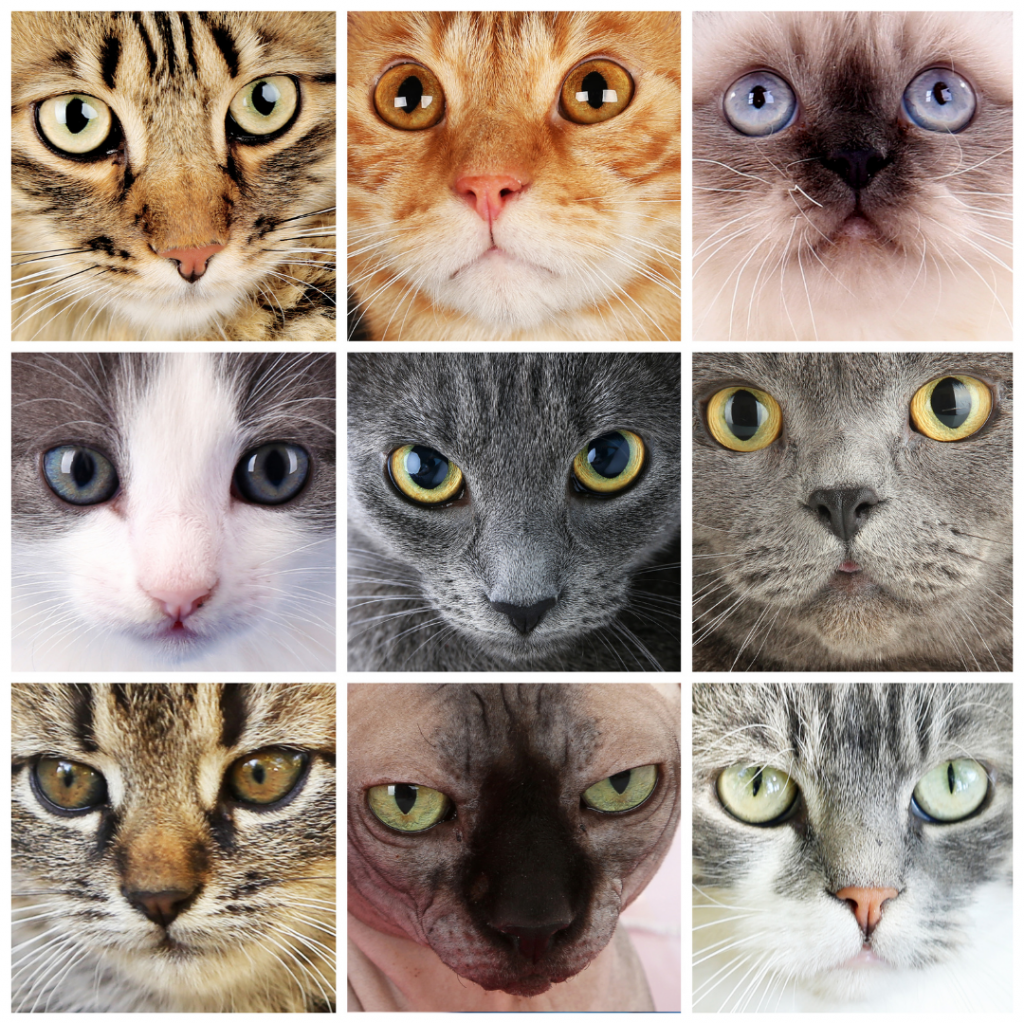
Why not adopt, and give a loving animal a home for life? Australia has a huge homeless animal problem and adopting a pet makes space for another in a rehoming shelter.
Adopting provides the advantage of many choices of breed and age, therefore you should have no trouble finding the kitty of your dreams.
Where do cats like to stay when away from home?
Next time your kitty’s looking for a great place to stay with comfy beds, great food, and room service from cat-crazy attendants, look no further than our cat boarding.
Our cat condos have are private and comfortable, and are ventilated with fresh air so that guests can’t smell each other, something that’s very important for relaxation. All guests get their own spacious suite, but if you’d like kitties from the same home to board together, please lets us know.
Our feline guests don’t need to worry about pesky pooches either, as canine guests stay in a different wing of the hotel.
Please click below to learn more.
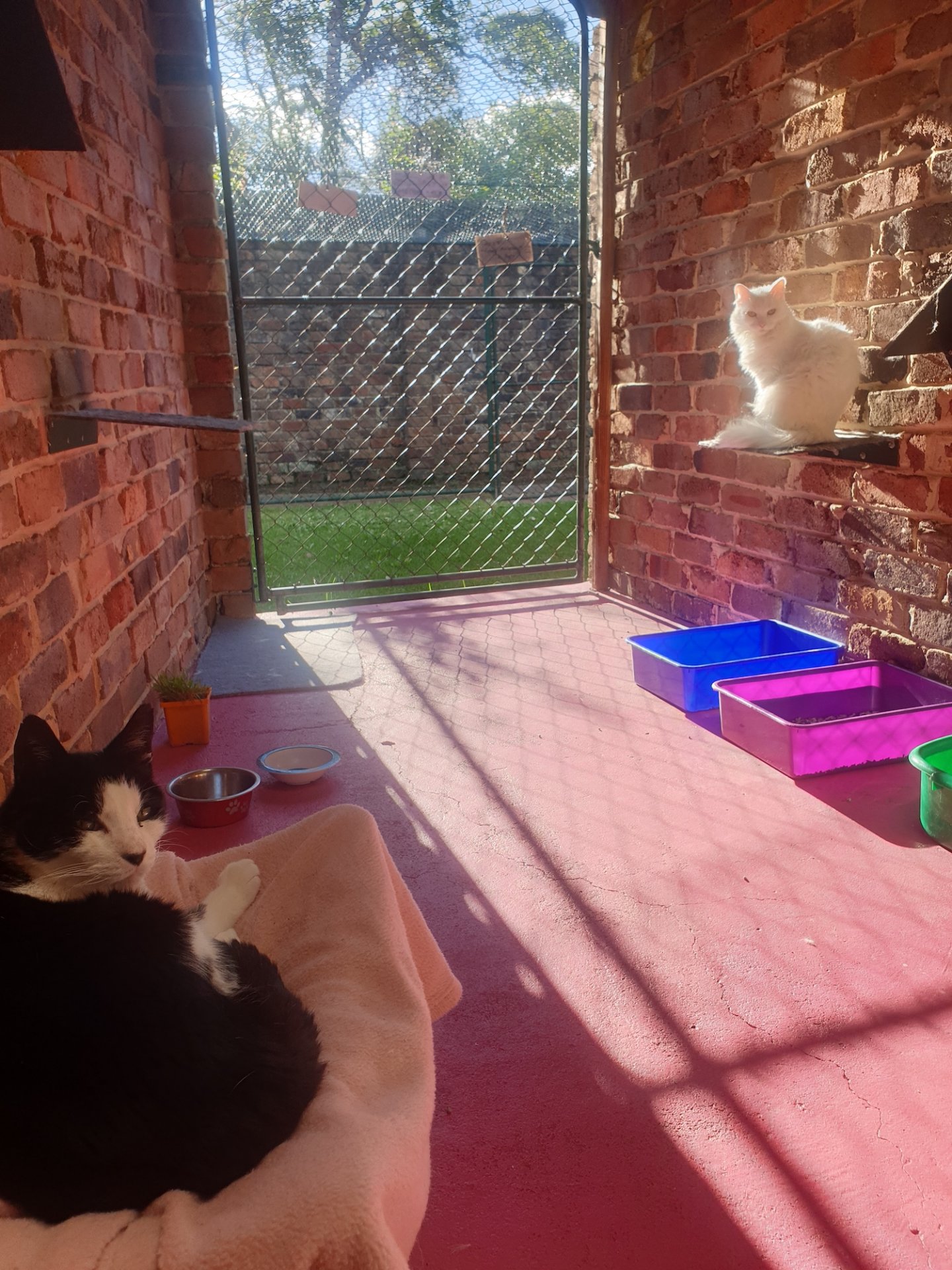
What are some of the most important aspects of kitty care? Check out these trouble shooting tips...
How to Become a Cat Slave (Owner)
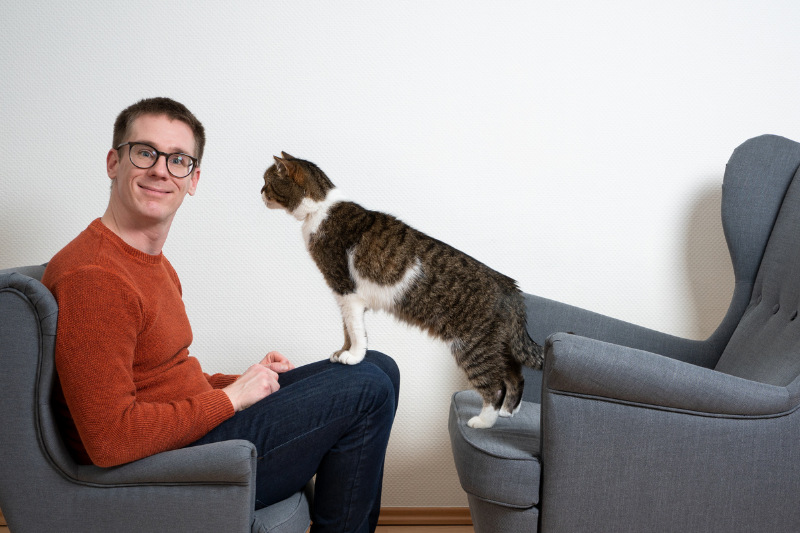
Should I get a purebred?
Purebred or mixed breed is a common question we get asked and there is no simple answer. If you are considering a purebred make sure you do plenty of research on breeds to see if they are the right fit for you. Speak to other people who own the breed or contact breeders for advice. There are also some great websites available that will outline each breed’s traits such as https://cattime.com/cat-breeds. When considering a specific breed be sure to consider activity levels, grooming requirements, playfulness and interest in affection. For example Russian Blues are quite affectionate family cats whereas Persians are less interested in playing. Burmese are very low maintenance in the grooming department whereas Maine Coons require regular grooming.
Mixed breed cats can be a cross between a few breeds or we sometimes refer to mixed breeds as Domestic short, medium or long haired. This is not a breed but more of a mixture of breeds that are the most common cats in Australia. Many of the kittens you will find at shelters are Domestic Shorthairs. These kittens make fantastic pets and often have brilliant personalities, low maintenance grooming and minimal health issues. Although this mixture of breeds might be a bit of a lucky dip, it is still possible to get an idea of their personality, size and grooming needs when they are kittens.
It’s important to note many breeds of cat are bred for particular physical characteristics which can contribute significantly to health problems. For example Scottish Folds are bred to have deformed ear cartilage which creates skin and ear issues. Another well-known example is Brachycephalic cats, that is, squashed face cats such as a Persians which are bred to have very flat faces making them very susceptible to obstructive airway disease although this is less common in cats than dogs.
What if I'm allergic?
Allergies to cats are far more prevalent than those to dogs. The primary allergens are founds in urine, saliva and glands so licking causes spread of these allergens to hair and dander. This means an allergic response can occur when the cat is directly patted or even indirectly from the dander they leave around the home. Although there is no such thing as a hypoallergenic cat, some breeds produce less dander either by having no or less hair or having curly hair that traps the dander. Breeds such as Sphinx or Devon Rex are less likely to cause allergies. Regular grooming and baths can help reduce the allergen load but remember, despite the breed choice there are no guarantees the kitten will not cause an allergic response in a family member.
What about kids & cats?
Kittens can be a wonderful addition to a family home and in most circumstances the kittens build a beautiful bond with the kids. However even the gentlest of cats can be dangerous if threatened or provoked so it is important to train both your kids AND the kitten! Kittens or cats should never be forced into playing with kids and should always have the option of a safe zone which for cats usually is a high up space such as a shelf. Involve your kids in handling or even training the kitten so the kitten understands positive reinforcement (i.e treats!) comes from the kids as well as you. Speak to your kids about the kitten’s boundaries and how to read its body language when it’s had enough. In most cases kittens will happily adapt to little people but certain breeds are certainly more family friendly such as Burmese, Ragdolls & Maine Coons.
How do I find a good breeder?
Whilst show cats must be on a show register, unfortunately there is no register for purebred cat breeders in Australia. There are multiple private registries however many of these have questionable standards of registration and are funded by breeders willing to advertise on their sites. Quite often advertisements for purebreds will state “registered purebred” or “RSPCA approved breeder” but neither claim is legitimate.
If you are looking to purchase a purebred kitten from a breeder they should provide the following:
- The kitten should be available to purchase from the place they were born. Movement of kittens is stressful and often indicates early weaning and less socialisation.
- The breeder should allow you to meet the parents of the kitten, particularly the mother.
- The breeder should allow you to see the living conditions they are selling from.
- All kittens should be vaccinated, microchipped and health checked by a vet with paperwork to support this.
- Breeders claiming they have pedigree papers should have these available to you prior to and on the day you take your kitten home.
- The breeder should offer ongoing support and a cooling off period.
- A good breeder will ask you questions about your living circumstances to determine if you are an appropriate owner for their kittens.
- The kittens should be a good weight with no medical conditions and a shiny coat.
If the breeder cannot provide you with the above information this should be a big red flag and we would urge you to look elsewhere for your new addition. Please be aware the promise of “papers,” whether they are vaccination certificates, microchipping information or pedigree certificates to be provided to you at a later date likely means they don’t have them.
A good breeder should provide you with all of this information on the day you pick up your kitten and not withhold any information from you. There are plenty of fantastic, compassionate caring breeders out there that can provide you with the perfect kitten to suit your needs so please take the time to research them well and ask the right questions.
How do I adopt a rescue cat?
Adoption is a fantastic option and there are excessive amounts of available kittens through RSPCAs, local shelters & pounds and larger shelters such as the Animal Welfare League. Many vets will also have kittens available for adoption that have been surrendered to them or found. By adopting a kitten from one of these facilities you are giving a home to a pet that doesn’t have one and providing space for another pet to be rescued and adopted. Despite many misconceptions around animal pounds they often have many happy healthy kittens available for adoption and should not be overlooked. The primary disadvantage of adopting one of these kittens is their unknown behavioural and medical histories. However they are much more likely to live happier healthy lives than kittens purchased from so-called backyard breeders that may inbreed or have poor lineage and a disregard for breeding out common medical conditions.
What if a cat finds me?
Owners will often say that a cat turned up on their doorstep or they found it abandoned. This is indeed sometimes the case and cats are known to “pick” an owner when needed. However as cats are roaming animals it’s really important to confirm they don’t already have an owner and this can easily be completed by visiting a vet and getting them scanned to check for a microchip. If the pet is microchipped they will likely get you to return the cat to the place it was found (so it can go home) or contact the owners for collection. If the cat isn’t microchipped you may have an opportunity to keep the cat and can discuss this with your relevant council or local vet.
Should I buy online?
When buying a pet online through websites such as Gumtree the same rules apply as if you were purchasing from a breeder. These days not many petshops offer kittens for purchase but if you are considering this option be sure to question the petshop carefully on where these animals have come from. Unlike breeders petshops will offer no going support following your purchase.
More information on where to purchase from can be found on the RSPCA’s website under the Smart Cat Buyers Guide.
What should I prepare?
Before you bring your kitten home make sure you have:
- At least one litter tray and litter.
- Food bowl
- Water bowl
- Cat carrier (preferably one that opens from the side and top).
- Toys
- A safe spot to confine them such as a crate or laundry.
- An escape proof area.
- Cat collar
If possible get information from the breeder or place of purchase on what diet the kitten or cat is currently eating and buy more of it ready for the day they come home.
Most kittens require a top-up vaccination within a few weeks of purchase so we suggest you visit your local vet prior to getting the kitten. Drop in to have a chat to the staff and see if it’s the right fit for you. This is also a great opportunity to get advice on food, preventative treatments and any other concerns you may have. Many vets such as ours offer a free health check within 48 hours of purchasing your kitten. Whilst this is a great opportunity to examine the pet and discuss any concerns you may have, most importantly it ensures their first visit to the vet is needle-free and full of treats and cuddles! This can have a huge impact on their future visits.
If you are adopting an older cat it’s still worthwhile dropping in to the vet and getting the cat’s medical record transferred to them. This can usually be arranged by calling the previous vet (if known) and asking them to email the cat’s medical records to your new vet.
Most kittens and cats will require a certain degree of “pet-proofing” to the house prior to bringing them home. Put away anything you don’t want scratched such as rugs, fabric sofas or cushions. Also put away or tidy up electrical cords and any string objects (e.g. ribbons, knitting yarn) or elastic bands or hair ties as these have the potential to be swallowed. Consider blocking off certain areas of the house that you don’t want the cat to have access to. Check the house carefully for escape routes or places your cat may hide. If your windows don’t have screens think about how you will ensure they can’t escape e.g. installing screens. Also consider breakables – cat’s take great joy in knocking over anything breakable!
If you are planning on letting your kitten outside we recommend you do not do this until they are desexed and don’t allow them outside between dawn and dusk as this is the time they are likely to hunt wildlife, get into fights or be hit by cars. If you would like your cat to have outside space but are concerned about them roaming consider an outdoor cat enclosure. Companies such as Catnet or Catmax make some amazing custom designed outdoor spaces to give you cat space to stretch and get some sunshine.
What do I do when I bring them home?
Moving to a new home can be stressful and scary for a cat as they learn to adapt to their new surroundings and meet a number of new people and pets. Pheromones can be a great option to help comfort and reassure your pet during the transition. Check out the Feliway website for more information.
For the car ride home ensure your cat is secured well in the car. As tempting as it may be to have them on your lap, they may be nervous about the car ride and react in different ways which may be dangerous for the driver. It is also illegal to have a pet on your lap whilst driving in NSW. Confine them to a carrier secured to the back seat or on the ground behind the front seats.
Once home give them time to adjust to their new surroundings. Move slowly and ensure the environment is calm. If they appear nervous give them a safe space to move to such as a box or small room. Don’t be alarmed if they are unsure or hide at first as it will take them some time to settle in. Make sure you immediately take them to the toileting area so they can familiarise themselves with where to do their business. Offer them water immediately and no food for the first few hours as their tummy settles after the car ride. Be sure to offer them the same food as they have had before as any sudden change in diet can cause nasty tummy upsets. Enjoy the time getting to know your new addition and visit the vet as soon as you have the chance.
Cats and Their Quirky Catitude
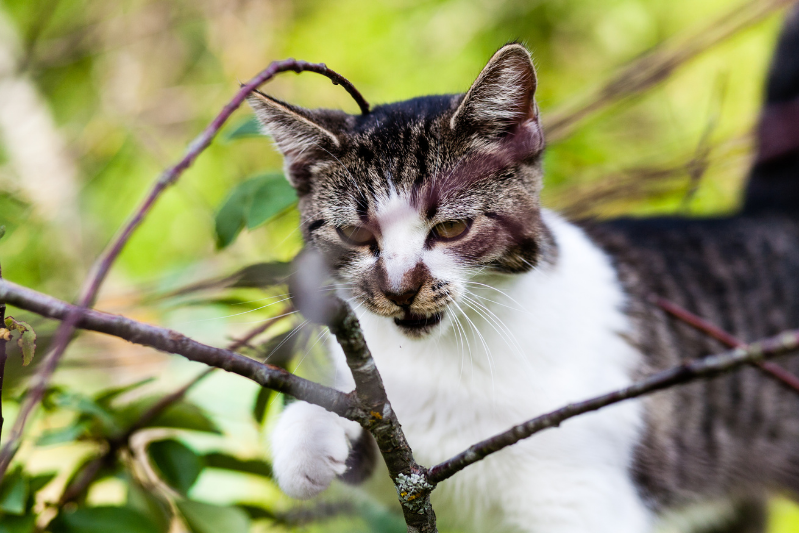
Is my cat’s zoomies in the early hours of the morning normal?
Zoomies or as it’s technically known, Frenetic Random Activity Periods are episodes of hyperactivity where your cat will move around the house rapidly often in repetitive patterns e.g. up and down a hallway or stairs. This can often end quite abruptly as your cat returns to being relaxed.
Zoomies are more common in younger cats and kittens as it is a way for them to burn energy. Older cats may also get the zoomies but if it is a new behaviour and is accompanied by other symptoms such as restlessness or weight loss it is worth a trip to your vet.
Cats are crepuscular which means they are most active at dawn and dusk to take advantage of the cooler times of the day. This is when they are biologically designed to hunt or utilize their predatory instincts so zoomies may also involve your cat practicing behaviours such as pouncing, stalking or jumping. This is why you are often woken in the early hours of the morning to your cat running laps in the hallway or why they may wake you for food at 4am.
However domesticated cats do not need to hunt so these behaviours can be dampened by managing a cat’s feeding and exercise schedule. Make sure you do not feed your cat on demand as they will soon learn that waking you results in a feed. Instead feed them later in the morning. It is also worth exercising them in the afternoon e.g. with toys or a harness walk so that they are ready to sleep in the evening instead of becoming active. If they are left alone during the day you can leave them with toys to help give them more awake hours whilst you are not home in the hope they sleep more at night.
How do I turn my outdoors cat into an indoors cat?
We are often asked how an owner can get their cat used to being indoors only as a result of moving house (hyperlink) or medical condition which requires indoor only access (such as FIV (hyperlink) or impaired vision). In general we believe restricting outdoor access is a good idea; read here for more info (hyperlink).
It’s important to know that transitioning a cat to indoor only can take up to a few months so be patient with them as they learn to cope with the change.
Our tips for making the transition:
- A gradual transition
If possible it may be useful to start with a gradual transition to indoors. For example you might start by bringing them in between dusk and dawn (i.e. when it’s dark). If this isn’t possible be sure to give them plenty of spots around the house that they can see outside and as much space as possible to move around.
- Enrichment
If your cat has previously had outside access then they are used to having a lot of space to explore and keep them entertained. You’ll need to think of some ways to enrich their indoor environment to reduce boredom. There are a lot of toys available on the market these days that can help such as battery operated mice, lasers or puzzle feeders.
- Exercise
Your cat will still benefit from exercise even if they are restricted to an indoor space. You may choose to walk them on a harness and lead or set up exercise options within the house such as vertical spaces for climbing or toys that make them chase and run. There are some fantastic furniture and FIY options for cat indoor play if you check out Pinterest or youtube.
- Cat Enclosures
If you have an appropriate outdoor space you might wish to create an outdoor escape-proof area. This is a great option and can in most cases be done simply. If you’re not into DIY, companies such as Catnet or Catmax will sort it all for you and provide a fun, secure area for your pet to get some sunshine.
- Pheromones
Feliway Diffusers are a great way to reduce the stress associated with transitioning a cat to indoor living. Plug it in the main room they will be spending time and it will emit pheromones that calm and reassure them. The diffusers last a month (then refills are available) and have a money back guarantee.
- Seek vet assistance
Some cats despite your best efforts will struggle with the transition leading to behaviour such as escaping or more commonly extreme vocalization in the hope of being allowed out. If your cat is exhibiting these symptoms please speak to your vet for medical assistance.
How do I stop my cat tearing up the furniture?
Cats scratch for claw maintenance, to mark their territory and to stretch. They will do this when they wake up from a nap, when they feel the need to mark their territory or if they are excited. This is a normal instinctive behaviour so should not be discouraged however the goal should be for them to scratch acceptable objects and not your expensive sofa!
The first step is ensuring they have good acceptable scratching options available. These should mimic the unacceptable scratching areas e.g. if they like a vertical sofa arm then provide them with a vertical scratch post. Alternatively if they like your favourite rug give them a horizontal flat scratching area. Be sure to experiment with different textures e.g. rug, wood or corrugated cardboard as every cat is different. You can attract them to this scratching spot with Feliway pheromones which are calming and reassuring. Have these acceptable scratching spots in their favourite spots and for quick access i.e. next to their favourite napping spot. This might mean you need multiple options available around the house. If you catch them waking up from a nap take them to this scratching area to encourage the right scratching spot and reward them for using it with a pat or scratch. You may also like to leave a few yummy cat treats close to the scratching post to further associate it with positive rewards.
If you catch them scratching an unacceptable spot ignore them instead of punishing them. If you do wish to interrupt them you may choose to make a loud noise (such as a clap) and then guide them to the acceptable scratching spot. You can also dissuade them from scratching these spots using double sided tape or applying a smelly spray that they don’t like (e.g. citrus). For any furniture items that can be temporarily removed (e.g. a rug) it might be worth doing so until your cat knows the acceptable places to scratch.
Keeping your cat’s claws short may help reduce the damage to furniture. This can be done simply at home but please ask our staff if you need a lesson. Please note declawing is illegal and not an acceptable solution to scratching furniture.
How do I stop my cat from hunting?
Hunting is a natural predatory behaviour for cats that stems from their ancestors who had to hunt to feed. Despite our domestic cats getting regular meals this behaviour is hard wired into their brains and it is not uncommon for cats with outdoor access to hunt rodents or small birds. It’s not entirely clear why cats often bring these “gifts” home but it likely has to do with them feeding their litter (i.e. their owner) or taking it to a safe place for eating later.
Whilst this hunting may sometimes serve a purpose (such as barn cats used for vermin control) it is often unpleasant for owners and affects our native wildlife population with over 1.5 billion native animals killed annually by pet or feral cats. So how do we stop our cats from hunting? Here are our tips.
- Balanced Diet
Feeding your cat a good quality balanced diet will ensure they are not hunting for hunger reasons and don’t require any additional nutrients. Speak to your vet about the best diet for your cat.
- Collars
Collars with bells can be an early warning signal for wildlife but studies have provided mixed results as to their effectiveness. Where possible collars should have quick-release clips to ensure the cat does not get themselves caught on objects.
A promising new collar, the Birdsbesafe acts as a visual signal to birds giving them time to fly away. This is a great option particularly for those cats that hunt a lot of birds.
- Indoor access
Obviously restricting your cats outdoor access will reduce their ability to hunt and is the best option for those cats that are serial offenders. Cats like to hunt at dawn and dusk so having them inside prior to sunset and not letting them out until the sun is up is best. Read here for more information on restricting cat’s outdoor access (hyperlink).
- Play
Providing your cat with lots of play time that involves hunting behaviour may redirect some of these hunting instincts. There are a lot of toys available to encourage this such as battery-operated toy mice. This exercise will also mean they are tired and less motivated to head out for a real hunt.
- Avoid punishment
If your cat presents you with a dead or injured animal do not punish them. Swiftly take the animal off your cat and dispose of them rapidly. If the animal is still alive it is best to get them to a vet urgently.
Fat Cats & Fussy Cats
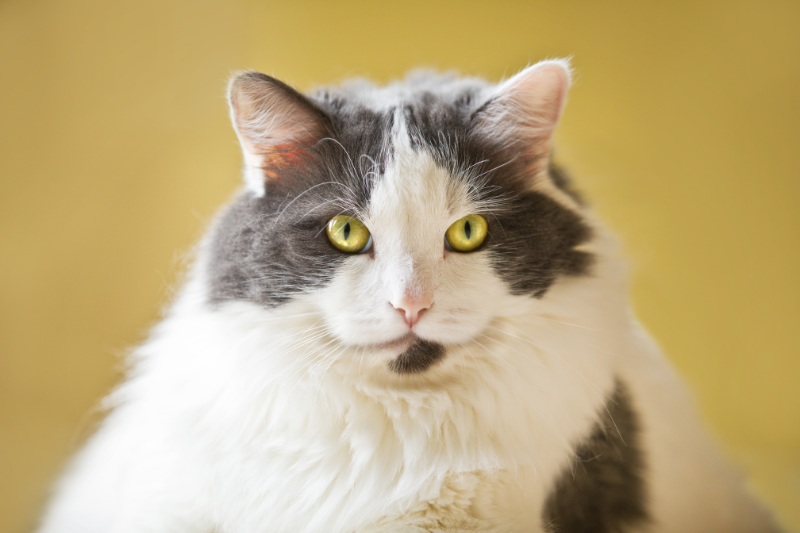
How do I get my cat to lose weight in a multi-cat household?
- The first step is to determine whether all of your cats are overweight of if there is just one that needs to shed some kilos. Get your vet to weigh them all and provide you with an assessment of their ideal body weight.
- Determine your feeding setup. If at all possible the cats should be fed separately. This may involve:
- Separate rooms (i.e. food down, doors closed until finished).
- Microchip-activated food bowls may be useful. It may be worthwhile having one for each cat or at the very least one for the cat that gets their food stolen. These bowls will only open for the cat with the assigned microchip. We stock these feeders so speak to our staff for more information.
- Make sure dogs do not have access to cat food and vice versa. This might mean feeding cats on an elevated surface.
- If your cats are grazers, they may need to learn to eat at meal times. Remove the bowls after feeds so that the cats can’t swap bowls and they will soon learn they must eat or go without. It might help to feed 3-4 times/day instead of 1-2 times/day if you are home. If your free-grazing cat cannot adjust consider placing their bowl somewhere the larger cat can’t get to e.g. in a crate with a small space to enter.
- Consider switching all your cats to a prescription weight loss food. Even if they are stealing each other’s food this will likely drop some weight off them regardless. Check with your vet to ensure this diet is ok for all your cats.
- When looking at food guides be sure to feed according to their ideal weight not their actual weight. Also keep in mind the food guides are just that: a guide and your cat may actually require less than what is recommended.
- Streamline who feeds the cats. Make sure all members of the household are on the same page about quantity and schedule so there are no double ups or overfeeding.
- Cut back on the treats or table scraps. All these extras add up to extra calories so should be reduced or considered part of their daily caloric intake (i.e. their main feed should be reduced accordingly).
- Do the cats have outside access? Often well-meaning neighbours may feed roaming cats. If you suspect your cat is getting food somewhere else get a “DO NOT FEED” collar printed to send your neighbours a friendly message.
We have a 12 week pet-fit challenge if you’d like assistance with your cats weight loss. Speak to our pet weight loss consultant for more information.
How do I stop my cat's incessant asking for food?
Does your cat wake you up before dawn crying for food? Are they constantly meowing throughout the day for you to refill their food bowl? This is a great example of a cat training you! In their infinite wisdom they have worked out that being vocal and bugging you will result in them being fed or at least getting some attention. Every time you feed them as a result of this behaviour you reinforce it! Clever cats right? But how do you break this cycle and stop the early morning wakeups? Here are our tips:
- Automatic Feeders are a good investment. Initially set them to dispense food earlier than when your cat would usually wake you up so they don’t have an opportunity to act out the vocal behaviour. Gradually set the timer back until it is dispensing food at an acceptable hour. If your cat starts to bug you again move the timer earlier and repeat the process. Eventually the cat will learn when to expect food and won’t bug you.
- Leave out puzzle feeders and toys overnight so your cat can practice their hunting behaviour and find food themselves.
- Consider getting another cat. Whilst this sounds drastic it might be a good option to give your cat a companion and someone else to play with. Be warned they may still be noisy in the middle of the night as they play!
- Spend a bit of time playing with them in the evenings before bed. Use toys to exercise them so they are more likely to sleep longer overnight.
- Shutting them out of your bedroom might stop them waking you up at night but it won’t reduce their boredom or hunger. Make sure you implement some of the above if you are going to do so and we’d suggest shutting them out at the beginning of the night not just when they wake you.
- If your cat is vocalizing for no apparent reason at night and appears restless they may have an underlying medical condition and we recommend seeking vet assistance.
What should I feed my kitty?
When you type this question into google you’ll probably be as overwhelmed as we were by the multitude of conflicting advice provided. Even amongst the veterinary professional industry we struggle to agree on the right answer to this question. Unfortunately the Australian commercial pet food industry is poorly regulated and there are many cat foods out there that are not balanced and potentially harmful to your cat. We suggest doing your research and working with your vet to find the right diet specific to your cat.
Fussy cats
- Pick a good food and stick with it
Whilst it’s worthwhile experimenting with flavours and textures make sure you pick a good quality food and stick with it. Continuing to experiment or feed them only what they love may lead to feeding of poor-quality foods that are highly palatable such as supermarket wet foods or diets that are meat heavy and not properly balanced.
- Establish a routine
Cats will appreciate a feeding routine so they know when they will be fed and how. Be sure to follow the same routine each day so they know what to expect.
- Cut back on treats
Feeding lots of treats may lead to your cat eating less of their usual food with the expectation they can fill up on treats. This not only affects their feeding schedule but will also likely lead to an imbalanced diet and weight gain. Keep treats to a minimum or keep a portion of their daily intake for handing out as a treat.
- Change up the bowl
Some cats can be very particularly about how their food is presented. Try separating wet and dry food or mixing it together. Try flat dishes versus more rounded bowls. Try ceramic versus stainless steel. Some cats will even turn their nose up at a bowl that is dirty so make sure you wash their bowl daily. Cats also prefer completely separate water bowls.
- Think about environment
Ambience whilst eating is important to cats so think about where their feeding area is. It should preferably be in a quiet spot separate from other pets and free of strong odours. It should also be separate to their toileting area. Make sure they can eat without distraction and external stressors.
- Slow transitions
If you need to change your cat’s food make sure you do this slowly and sneakily. For more information read here.
- Don’t force feed
Never force a cat to eat a food. This will just lead to them resenting it even more.
- Experiment with your cat’s preferences
Every cat is different and it’s important to determine what your cat likes. For example some cat’s like their food warmed to room temperature or even warmed up in the microwave. Some cats don’t like their wet food stored in the tin so it will need to be placed in a plastic container for storage. Some cats like being petted whilst eating whilst others like being left alone. Once you know what your cat likes you can work with this to help them eat.
Cranky Cats

Why is my cat biting me?
Cat aggression is a natural part of predation, play and social conflict. However sometimes when this aggression is directed at humans it can become a problem behaviour. The first step is working out why the cat is being aggressive and whether this is considered normal behaviour as normal aggression is relatively easy to address with behavioural intervention. Abnormal aggression is a lot tricker and we would recommend referral to a veterinary behaviouralist for these issues.
Why is my cat being aggressive?
Aggression is usually associated with social issues, fear/anxiety, frustration, inappropriate play or illness/pain. A vet may be able to help you determine which is the cause by discussing the cat’s environment and the extent of the problem. They will also complete a physical examination to rule out a physical cause. If a behavioral cause is determined the vet may suggest referral to a behavioural specialist.
Is my kitten playing or being aggressive?
When kitten littermates play they engage in quite “rough and tumble” fighting. If it gets too rough they will give a visual or audio cue to their littermate to tell them to back off so kittens learn how hard to bite when playing. When a kitten plays with a human we often encourage this rough play by using our hands to play with them. This leads to the kitten identifying the target of play as bare skin, usually hands and feet which they will pounce on at every opportunity.
To stop this progressing as they get older, play should be focused on non-body parts such as toys or sticks that put the play target at a distance from your hands. Hands should then be associated with stroking, holding and feeding rather than predatory play. If they do bite or attempt to play with your hand, ignore but do not punish as this may be seen as play or appear threatening to the cat.
Why does my cat bite me when I pat it?
Stroking a cat mimics their mother’s grooming actions so most cats or kittens will enjoy it. However many cats if they are relaxed enough will have an instinctive survival mechanism kick in that, in their vulnerable state, causes them to react aggressively to potential danger. They will often react then return to their original relaxed state as if they are embarrassed by their sudden mood change.
To stop this from occurring watch carefully for cues that indicate your cat has had enough. They will likely stop purring, become stiff, may thrash their tail and can even hiss as an obvious warning they are no longer comfortable.
Why did my cat bite me when it saw another cat?
When a cat sees another cat unexpectedly it may be considered a threat and aggression may be a defensive response. Unfortunately in this heightened state of alertness if the cat’s owner was to intervene they may be on the receiving end of re-directed aggression. The cat is not angry at you, merely taking out it’s heightened defensive state on the closest moving target. Be very cautious if attempting to intervene in these situations.
What do I do if I'm scared of my cat?
It is important that your safety is priority as cat scratches and bites can be very dangerous. If you feel your cat is likely to bite or has been demonstrating extreme aggression, do not attempt to touch or approach the cat. You can attempt to separate the cat from other members of your household (humans or pets) e.g. by closing them in a dark room. This will also help reduce their arousal levels and calm them down. Do not shout, confront or attempt to punish the cat as this will very likely lead to further aggression. Most cats will calm down within a few hours.
Once the cat is secure we recommend speaking to your vet about the best course of action. Cats that have repeated episodes of extreme aggression can be really difficult to handle and it’s hardly surprising that this issue is very stressful and emotive for owners. Your vet should be able to discuss all possible options specific to your circumstances.
What are the warning signals if my cat is becoming aggressive?
If you can identify the warning signals that your pet is becoming aggressive it may help to reduce the incidence of bites. The following may occur just prior to an aggressive event:
- Dilated pupils, direct staring
- Thrashing/twitching tail
- Hissing, growling or spitting
- Flattened ears
- Crouched tense posture
If any of these occur it is best to give your cat some distance. Continuing your approach will likely lead to aggression.
If you are interacting with your cat it’s best to let them initiate the contact until you get a feel for the level of attention they are after. Start by gentle stroking or rubbing their face and neck and let them guide you. If your cat wants to escape a situation (e.g. being held), let them so they are not pushed to respond aggressively.
Cats & Stress
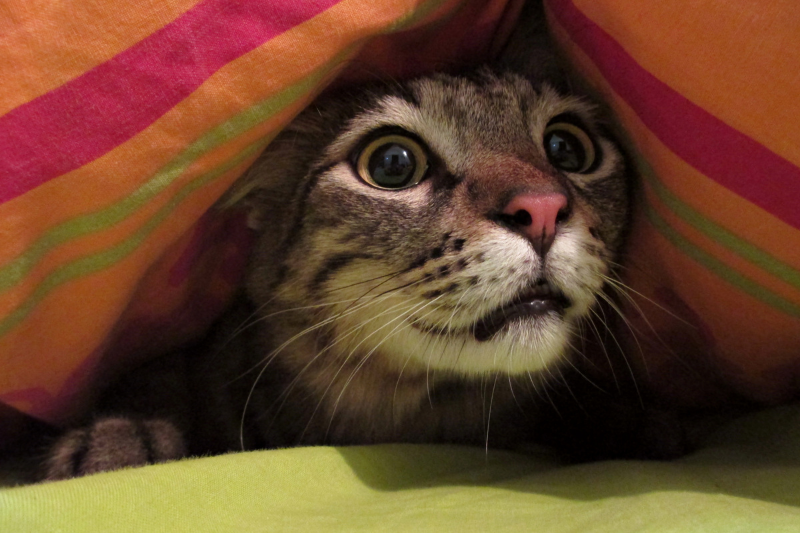
Choosing the best cat carrier
Cat carriers come in a huge range of designs, quality levels and price points. Some of the key features to look for include:
- A top opening carrier or removable lid. This makes retrieving cats from their carrier much easier if they are reluctant to come out, and a lot of their health exam can be performed whilst they are sitting in the base of the carrier.
- Quiet fittings & latches. Cats often already feel anxious about the carrier and loud noises as it is opens or closes can further startle them and cause additional stress. Always make sure the latches are secure so they cannot escape!
- Open vs enclosed. Some cats appreciate being able to view their surroundings (e.g. as in wire-top carriers), however most cats just want to hide and will prefer a carrier with more solid walls (make sure it has air holes!). Towels are useful to drape over carriers so that the cat can feel more hidden and secure (especially if it is pre-sprayed with Feliway)
- Carriers should be adequately sized to allow a cat to stand up or lay down inside it comfortably, however it should also be of a size that can be safely and smoothly carried by the owner.
- Comfortable bedding. This will not only make your carrier more appealing for your cat, but can help absorb any accidents or car sickness along the way. On that note, try to select a carrier that is easy to clean (eg plastic rather than fabric) as adverse smells may make the carrier even more unattractive to your cat.
- The carrier should be strong enough to support the weight of the cat and resistant to claw/bite marks. Cardboard boxes do not stand up to the willpower of a determined cat.
- Many carriers come with a handle on top but carrying in this way may feel wobbly and unbalanced to the cat inside so we recommend carrying them with two hands underneath or either side.
How do I train my cat to like the cat carrier?
It is much easier to get a cat into their carrier when they associate it with positive experiences, especially if this is implemented from a young age. The cat should be exposed to their carrier on a daily basis rather than storing it away until it is required for veterinary or boarding visits. For example, an open carrier may be set up by a sunny window with soft, familiar bedding. Treats and toys are useful for building positive associations and can encourage the cat to enter the carrier voluntarily.
If the cat has not previously had time to become accustomed to the carrier, putting the cat and carrier in a small room with limited other hidey holes can encourage the cat to enter the carrier with minimal stress. If you have a top opening carrier it may be useful to remove the lid, encourage the cat into the base, then gently place the lid on top once the cat is settled. Your cat should never be chased into the carrier as this will just cause stress and potential bite/scratch injuries.
Feliway is a synthetic pheromone that is designed to comfort and reassure cats. A plug-in diffuser may be placed near the carrier or the spray can be applied directly to the carrier or blanket within it. Allow 30 minutes after spray application before placing the cat in the carrier.
If you are transporting multiple cats we’d always suggest placing them in separate carriers as even if they are the best of friends in a stressful situation they can become aggressive towards each other and want their own space.
What's the best way to get my cat out of their carrier?
Dragging a cat out of their carrier will likely result in a stressed cat and potential injuries. Instead, open the door and let them come out on their own accord using pats or treats as encouragement or remove the lid of the carrier so the cat can be examined whilst they are in the base. If they don’t want to come out you could try placing a dark hidey hole next to the carrier that they can see and may want to wander in to.
How do I reduce stress for car trips
Once your cat is comfortable in the carrier, getting them used to short drives can reduce the stress of future travel. In the car, ensure the carrier is secure and doesn’t jostle around too much (eg with a seatbelt or in the footwell). Most cats will appreciate having a towel placed over the carrier (preferably sprayed with Feliway) to help them feel hidden. Drive safely and play quiet, soothing background music for the trip.
Give yourself plenty of time to find the cat and get them into the carrier before your appointment so that it can be completed as calmly and stress-free as possible. For outdoor cats this means enclosing them in a room or at least in the house the night before. A familiar blanket with the cat in the carrier can be soothing. You may want to bring some of your cats favourite treats for the visit.
If you know your cat is particularly stressed byb car trips and vet visits advise the veterinary staff at the time of booking. This will allow for some extra strategies to be put in place to keep your cat as calm as possible. For example, you might be taken straight to a consult room if the reception area is busy or noisy. For some patients, the veterinarians will prescribe anti-anxiety medication to be given prior to the visit. House-call visits may be an option in some cases.
Grooming & Toileting

Do I need to bath my kitty?
Nope! Cat’s instinctively groom themselves and tend to be very clean animals. If they get dirty they tend to sort themselves out. However occasionally if they get very dirty or covered in something untoward you might want to attempt a bath. Be warned most cats don’t tend to like it and it can be hard to keep them still. You are quite likely to get scratched or even bitten in the process. We suggest using a high reward treat to distract them (e.g. cream cheese on a lick mat) whilst you complete the bath quickly. Use an oatmeal-based pet shampoo.
Helpful information for kitty owners
Kitty products we love...
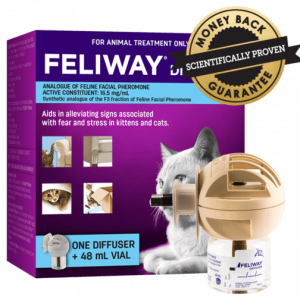
Feliway®
Feliway® is a synthetic copy of the feline facial pheromone used by cats to mark their territory as safe and secure. By mimicking the cat’s natural facial pheromones, Feliway® creates a state of familiarity and security in the cat’s local environment thereby helping to calm them down and help relieve stress and anxiety.
There a a number of Feliway products available for use at home and we carry Feliway spray. If you would like to learn more about how Feliway might help your cat or purchase it, please pay us a visit.
Ready to book a kitty consultation?
Call us on 94847418

